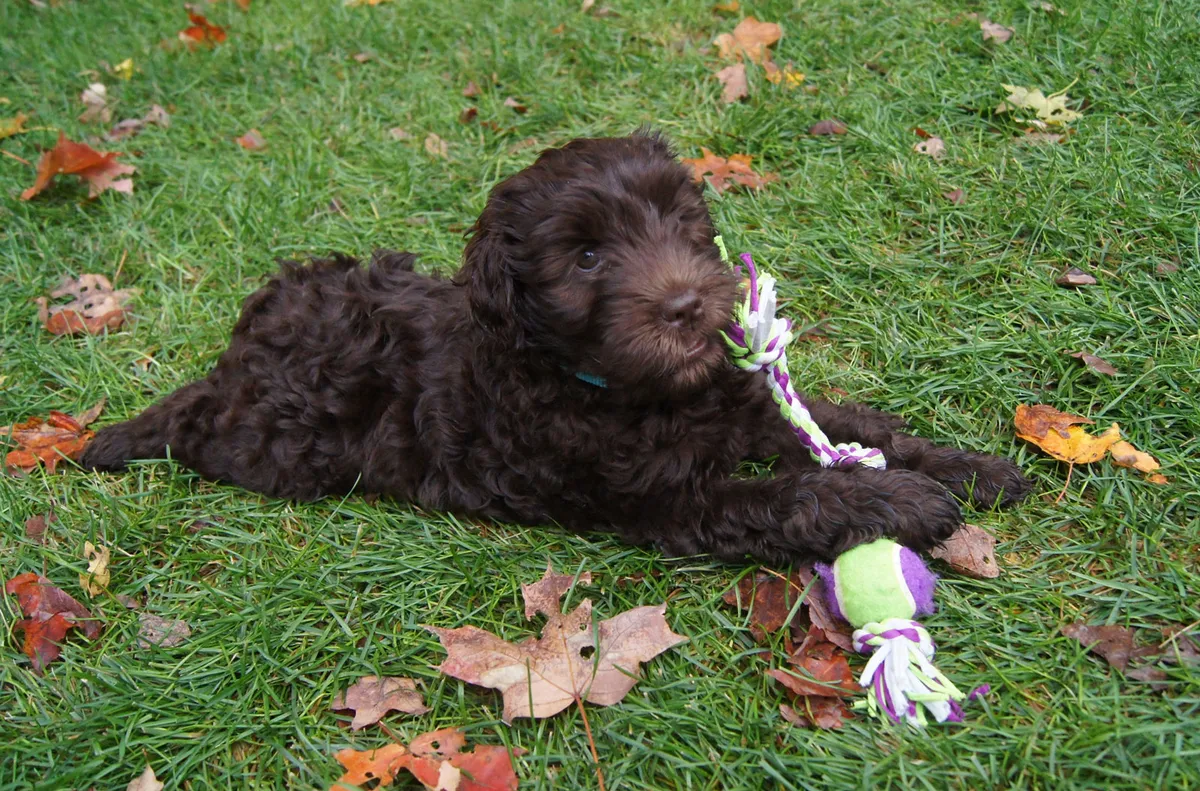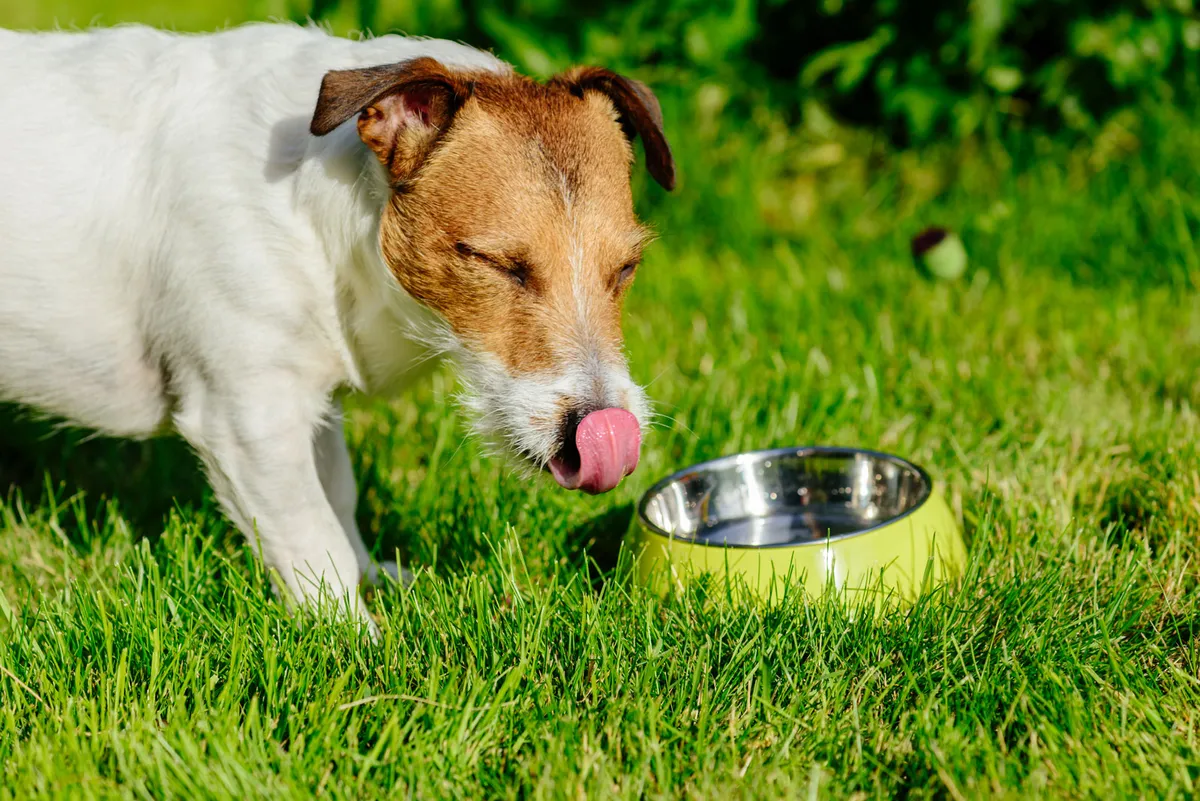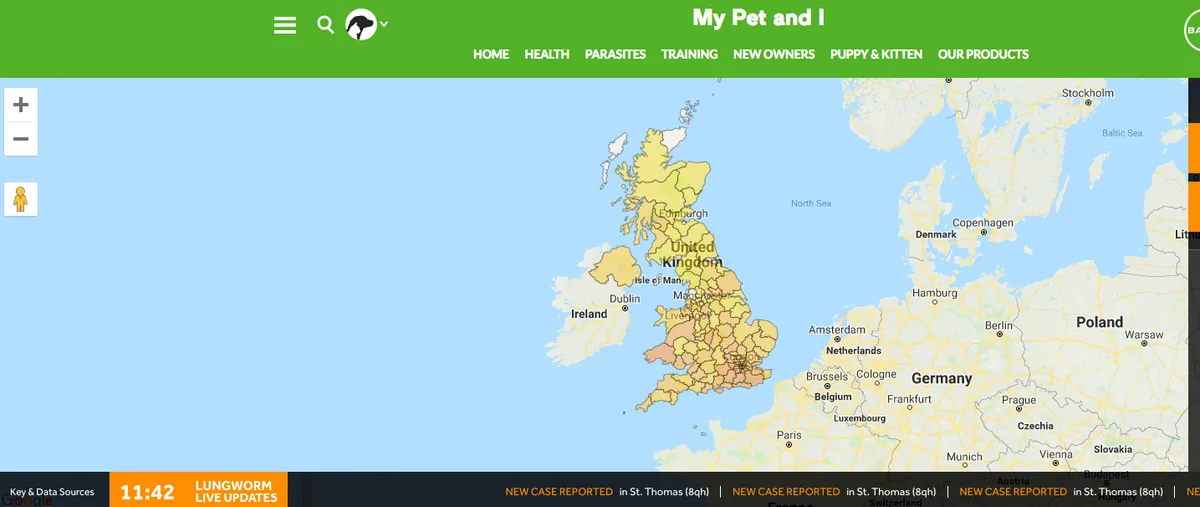Once a rare condition in the UK, the potentially deadly parasite lungworm (Angiostrongylus vasorum) is now widespread across the country, with cases reported commonly reported in Southern England, Wales Northern England, the Midlands and Scotland.
Most recently, nearly 600 cases have been reported in Oxfordshire and around 100 cases in Cheshire. We will update this page with information on cases.
Fortunately, there are ways to reduce the chance of your dog catching lungworm by taking a couple of simple precautions before heading outdoors for a walk or letting them play in the garden.
Our expert guide by Head Veterinary Nurse Laura Hawkins and British Veterinary Association (BVA) Past President Gudrun Ravetz explains what lungworm is, how to spot the signs and what you can do to protect your dog from this potentially deadly parasite.
Ticks are another parasite to be aware of as ticks can carry a serious disease called lyme disease and a potentially deadly rare tick-borne encephalitis virus (TBEV). Alabama rot is another serious disease that you should be aware of as a dog owner.
On a cheerier note, we've gathered our favourite dog walks in Cornwall and dog beds for sleeping hounds. and why not check out our favourite dog quotes.
What is lungworm?
Lungworm is an infection caused by the round worm parasite called Angiostrongylus Vasorum (AV). Slugs and snails carry the lungworm larvae and dogs generally become infected when they play with and consume them. They can also come into contact by eating grass, drinking from puddles, outdoor water bowls or toys that have been left outside in grass as the larvae can be left in the slugs and snails slime trail.
Unlike many diseases, lungworm cannot be passed from dog to dog. The worm needs slugs and snails to act as a host in order to grow and develop. Frogs can also be used as a host.
Incidents of lungworm being diagnosed in dogs were originally more prevalent in the South East and in South Wales, but there have been an increasing number of cases in other parts of the country, including Scotland. However it is still a rare diagnosis.

How do dogs get lungworm?
Dogs pick up the AV larvae after eating infected slugs and snails or licking the slime trails left behind. The larvae mature and migrate around the body, ending up in and around the lungs. Worms will then lay eggs which mature into larvae in the dog's body and are then coughed up by the dog, swallowed and passed in the faeces, which will go on to infect more snails and slugs… And the cycle starts again.
Garden pests
Slugs and snails are hermaphrodites – each individual has both male and female sex organs, so any two individuals can mate and reproduce, and a single individual can even self-fertilise to reproduce. Eggs form in clusters in the soil, beneath leaves, or in other areas where the soil is damp. The eggs can lie dormant in the soil for months and hatch only when conditions are suitable.

Agronomist Ryan Hudson says numbers will generally increase during a warm and wet period, such as a wet spring, which can encourage higher adult numbers resulting in more eggs laid for the autumn.
Infected dogs and foxes spread the parasite into the environment by shedding lungworm larvae in their faeces. The disease is then picked up by common garden dwellers including slugs and snails, which, once infected, continue to spread the disease. The parasite can even survive in their slime trails!
Dr Bryony Tolhurst, behavioural ecologist at the University of Brighton, explains: “The lungworm parasite relies on slugs and snails to be transmitted. Dogs can become infected from eating slugs or snails carrying the parasite. Infective larvae can also survive in their slime trails for around two weeks in damp conditions1, and thus potentially provide another route of exposure to the parasite."
Foxes
Expanding fox populations are thought to be one of the reasons for its spread, affecting almost one in five foxes across the UK, according to a 2015 study which examines the carcasses of 424 foxes. To date, 2897 cases of lungworm in dogs have been recorded across the country, but as there is no obligation to report the disease, the true number of cases is likely to be much higher, warn experts.

Foxes can become infected with lungworm, and have been massively implicated in the spread of the parasite across the country.
What breed of dog is most at risk from lungworm?
Dogs of all ages and breeds can become infected but studies have shown that some breeds are more commonly affected than others, although why this is the case is not yet known, it is thought that dogs who love to investigate, sniffing out new scents and snuffling around in the soil could be at particular risk.
Spaniels are one of the most commonly affected breeds. It is thought this could be the result of breed defect or that the breed is commonly outdoors and used for working.

Younger and greedy dogs also seem to be more prone to picking up the parasite due to their inquisitive nature.
What are the symptoms of lungworm in dogs?
Here are the signs and symptoms lungworm in dogs:
Many dogs won’t initially show symptoms of lungworm and it can go unnoticed for quite some time as the symptoms can easily be confused with other illnesses.
- Some dogs will show no symptoms but can shed the larvae in their faeces for significant periods of time.
- The severity of clinical signs can vary from subclinical – where the owner will not notice any illness – to mild symptoms, severe symptoms and death.
- Dogs will often cough due to the physical presence of the worms in their lung area.
- Problems associated with bleeding, such as blood in urine, vomiting blood and petechial haemorrhage (pink blood spots on the gums) may be signs of lungworm.
- Owners may also notice a severe reddening around the eye – scleral haemorrhage.
Other symptoms of lungworm can include:
- Breathing problems
- Coughing
- Tiring easily
- Poor blood clotting
- Excessive bleeding from even minor wounds or cuts
- Nose bleeds
- Weight loss
- Poor appetite
- Vomiting
- Changes in behaviour
- Depression
- Lethargy
- Anaemia
- Diarrhoea
- Seizures
How to treat lungworm in dogs?
- Vets can test for the presence of the worm in a number of different ways and many practices will have an in-clinic test that can give a result quickly.
- The infection can be very serious and can cause death. Treatment is aimed at killing the worms but occasionally treatment can worsen the clinical signs due to the large number of dying worms.
- There are preventive medications that owners can get from their vets to try and reduce the risk of infection. Owners can also restrict their dogs from accessing areas where there are slugs and snails.
- Avoid leaving dog toys out in the garden where they may be covered in snails and slugs, which your dog may then ingest.
- Lungworm is not common but owners should discuss the risks with their veterinary surgeon who can then provide the correct preventive treatment.
How can lungworm be prevented?
Many Veterinary practices will routinely carry out a lungworm test before performing surgery on a dog or to check that they have been receiving a preventative treatment. This aims to reduce the risk of bleeding post-surgery which can be fatal if the dog has lungworm.

To reduce the chances of your dog contracting lungworm, simple methods of dog hygiene should be carried out, such ensuring faeces is picked up and disposed of correctly and not leaving toys or bowls outside. Obviously, it is harder to stop a dog drinking from puddles or eating slugs and snails if this is their nature, but a simple monthly spot on treatment can be used to treat and prevent lungworm. Alternatively, if your dog will eat a tablet (try hiding in a small piece of meat or in their dog food) tablet versions also prevent lungworm if taken monthly.
Why is lungworm on the rise?
The reason for the increased numbers of dogs diagnosed with lungworm is not completely clear but may be due to a number of factors, including changes in the environment that increase the number of snails. The fact that diagnostic tests are becoming more available may also have increased the number of reported cases.
This lungworm map of the UK reports on all recorded cases in your area.
